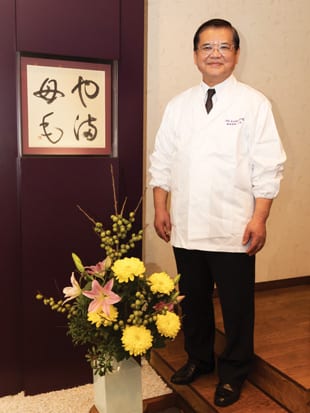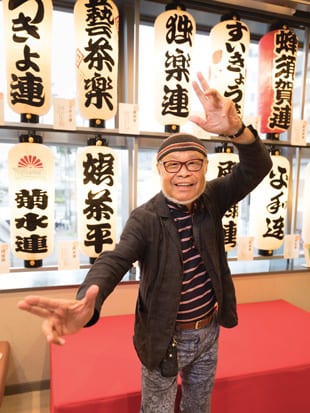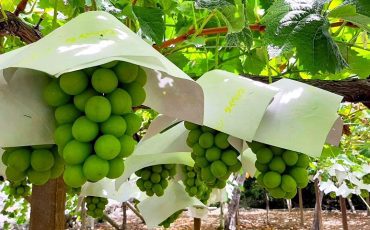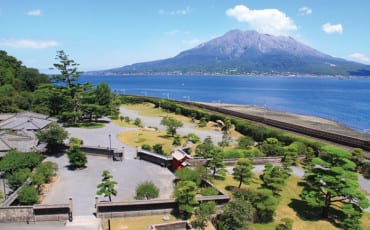Articles
Features
Jan 1, 2018
Tasty travels around Tokushima
Tradition with a twist in Tokushima
Inerview
 Tatsuji Motoki,
Tatsuji Motoki,
Head Chef, Yamamomo restaurant, Awa Kanko Hotel
Chef Motoki has worked for 29 years at this time-honoured hotel, and still seeks to innovate with dishes that he’s devised to cater to Islamic guests. He tells us how this demand made him reconsider the preparation of his colourful kaiseki menu.
What made you decide to offer halal food?
We started having customers from Malaysia, and then other Muslim countries, so my challenge was using halal ingredients and creating Japanese kaiseki with good style and taste. We use miso, soy sauce and vinegar that are halal certified; our beef is also handled appropriately.
What are the special ingredients from Tokushima that you’re using for this menu?
We are using Naruto kintoki sweet potato, yuzu, Handa somen, Naruto tai (red sea bream), pear and persimmon. We change the kaiseki menu according to season, and use bamboo or lotus leaves to decorate our dishes.
Your dishes are very brightly coloured. Is the presentation as important as the taste?
With any Japanese food we say you don’t just taste with your tongue, but eat with your eyes. In the autumn and spring it gets very colourful, so the food reflects nature in each season.
Which drinks would you recommend to complement this kaiseki menu?
I’d recommend sudachi or yuzu juice with soda – it should be very refreshing. Also, of course, Japanese tea! From this region, there is Awa Bancha, a brown tea where green leaf is fermented by lactic acid.
Which attractions and activities would you recommend for tourists in Tokushima?
Go and see the whirlpool at Naruto, the ancient bridge made of vines, and go whitewater rafting at Iya Valley!
 Hideaki Oka,
Hideaki Oka,
Vice Chairman, Tokushima Awa-odori Association
The Awa-odori folk dance dates to the Middle Ages. A dance festival every August is the largest event in Tokushima, and draws participants and spectators from all over Japan. Now 76, the man in charge of keeping this artform alive talks about his passion.
Can you tell us about the history of this dance?
Awa-odori goes back more than 420 years. It’s a typical Bon (traditional Buddhist) dance performed to receive ancestors’ spirits.
What’s special about the Awa-odori?
The dance is very “free”. It’s only done on two beats, so it’s easier; and there are six instruments. In Japan, there are usually only three instruments for this dance. Out of 980 teams, only 33 are allowed to perform the dance in this space (Awaodori Kaikan).
Which age groups are represented in the teams?
We visit schools to recruit young people. They need 10 years’ experience before performing in public. Our youngest dancers can be as little as five, and there’s no upper limit – you can be as old as you wish.
How do you maintain this dance tradition?
One important factor is taking the dance out on the road so that people know about our culture internationally. This summer I went to France, the Netherlands and Sweden, and did a demonstration. Whenever we went, everyone started dancing – sometimes 10,000 or 20,000 people!
What kind of impact has Awaodori Kaikan had?
Before, you could only see this dance at hotels organised by travel agencies. Here, it’s like coming to a movie theatre! I’ve appeared in the media, so people see me and say, “I want to dance like him!”
Tell us more about the annual festival here.
It lasts for four days, and 190 teams take part. This might be the largest festival in Japan: 1.3 million people visit (12–15 August). Costumes are bright and loose; lanterns correspond with the colours. It’s just spectacular!
>>Read more about Tokushima Products
>>Read more about Tokushima Foods








